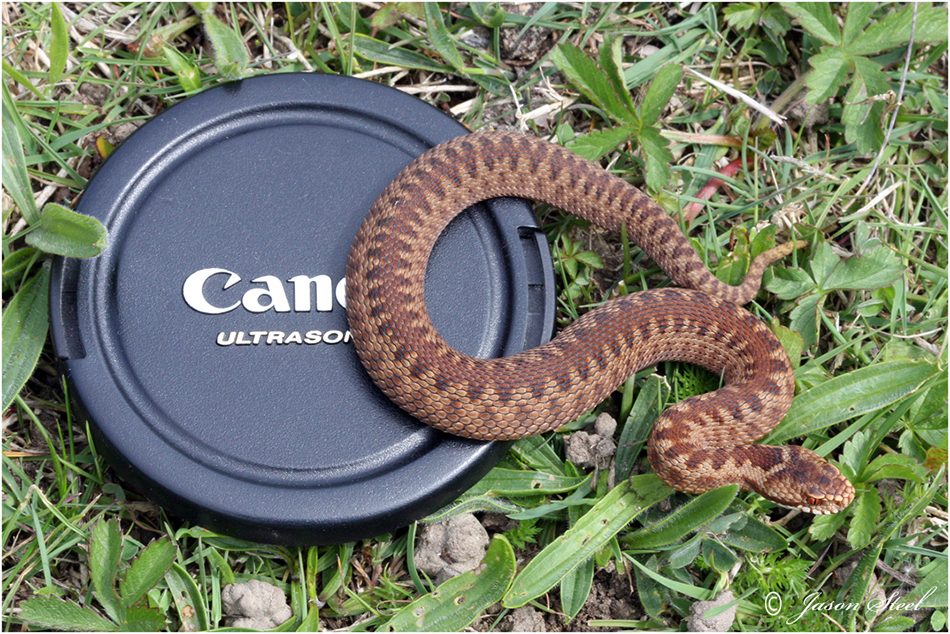
Neonate Adder.
Newly born Adders, as pictured above, are just 16cm in length but resemble the adult Adder in every way. The camera lens-cap in the photo gives a good indication of the young Adder's size. Despite the small size these tiny Adders can still be as potentially dangerous as the much larger adult snakes. The theory that neonate Adders are unable to control the level of venom injected in a defensive bite is a common misconception and something I too believed until it was recently revealed to be a nothing more than an inaccurate myth by leading herpetologist and toxicologist Wolfgang Wuster in a Zoom conference I was privileged to attend in 2021.
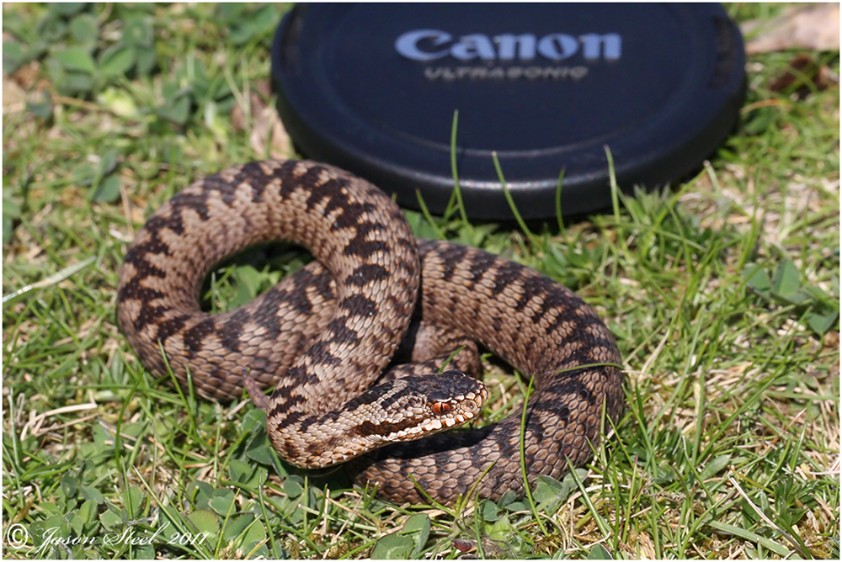
Juvenile Adder.
Another juvenile of about 25cm in length. Despite the difference in colour it is often very difficult to tell the sex at this age by colour or contrast. The best way to tell is by looking at the tail shape.
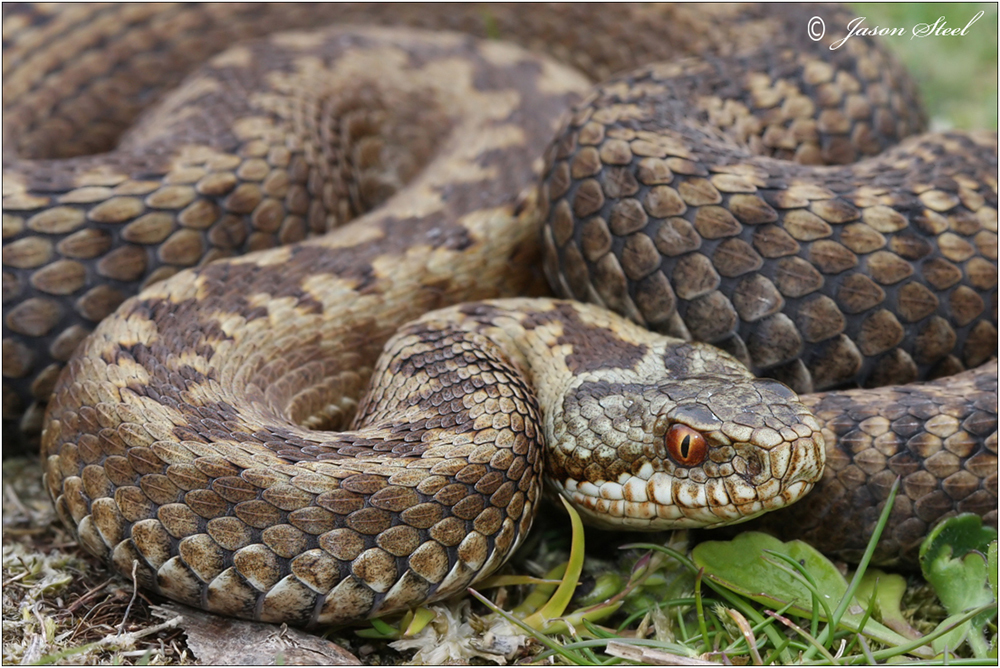
Adult female Adder.
A radio 'tagging' experiment in April 2010 at the Wyre Forest has revealed that adult male Adders will travel distances of up to a Kilometre in the Spring in search of a mate. This is far greater than previously supposed and this information will be useful for future conservation efforts.
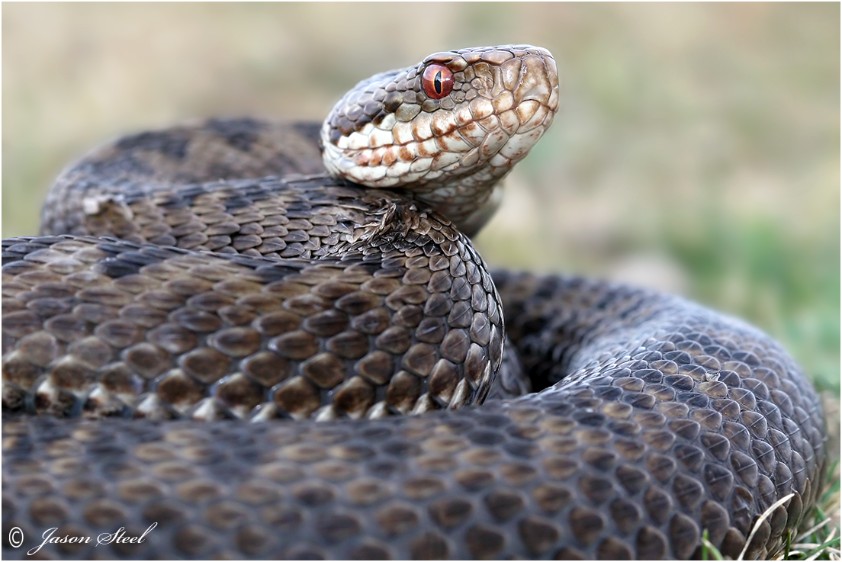
Adult female Adder.
The continued project of 'tagging' Adders with radio transmitters is giving herpetologists a much greater understanding of the secretive lives of these elusive snakes. It is now understood that Adders are not just ambush predators. They will actively hunt out their prey underground in burrows occupied by small mammals.
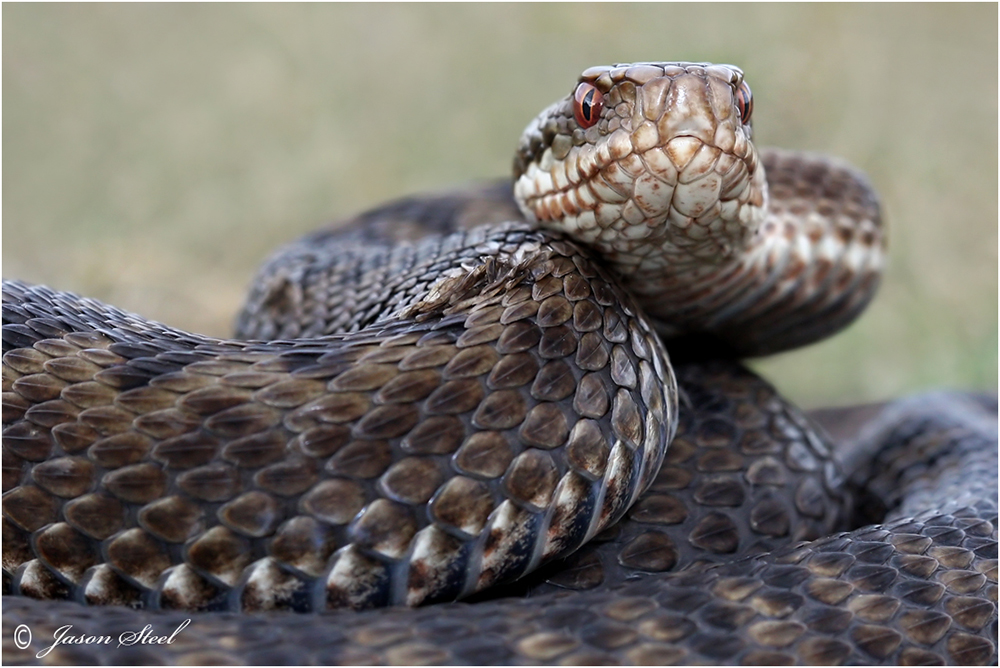
Adult female Adder.
Adders, like our other native reptiles, spend much of the winter in hibernation. They usually hibernate from November and often emerge in the Spring, as early as late February, if the weather is mild enough. The den in which Adders hibernate is known as a hibernaculum. Adders usually return to the same den every winter. Hibernation sites are often abandoned mammal burrows but can also be situated beneath trees and bushes or rock crevices. Adders usually hibernate in groups to conserve heat and can even hibernate with different reptile species altogether. Some hibernacular have been used by generations of Adders for many years. It is vital that these hibernacular are identified and preserved to protect future Adder populations.
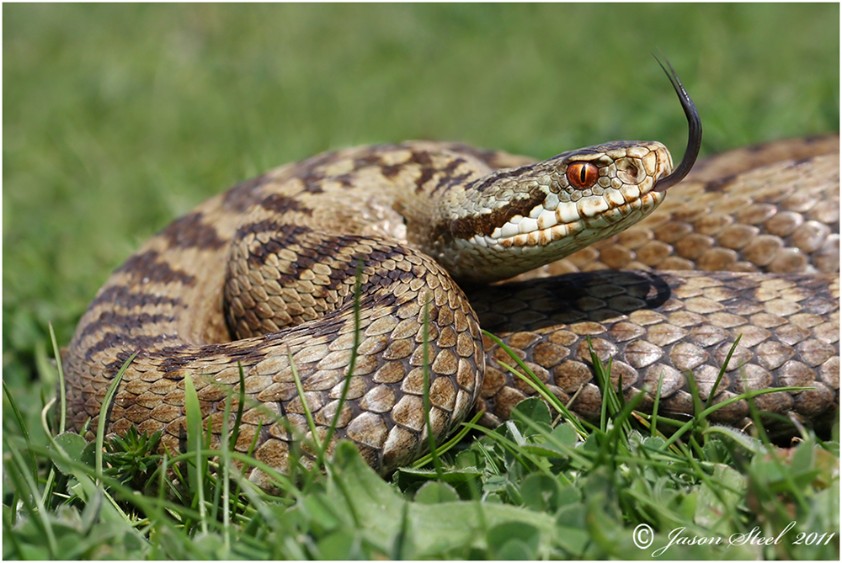
Adult female Adder.
Adders normally hibernate 3-4 ft underground where the ground temperature rarely drops below 4 degrees. A mild winter can be disastrous for the hibernating Adders. If the weather warms up mid-winter and the temperature gets too mild then the Adders may wake up and become active too early and waste valuable energy reserves. If the weather then turns particularly cold again the Adder may not have enough energy left to endure the remainder of the winter. Adders have been seen active in January after particularly mild spells.
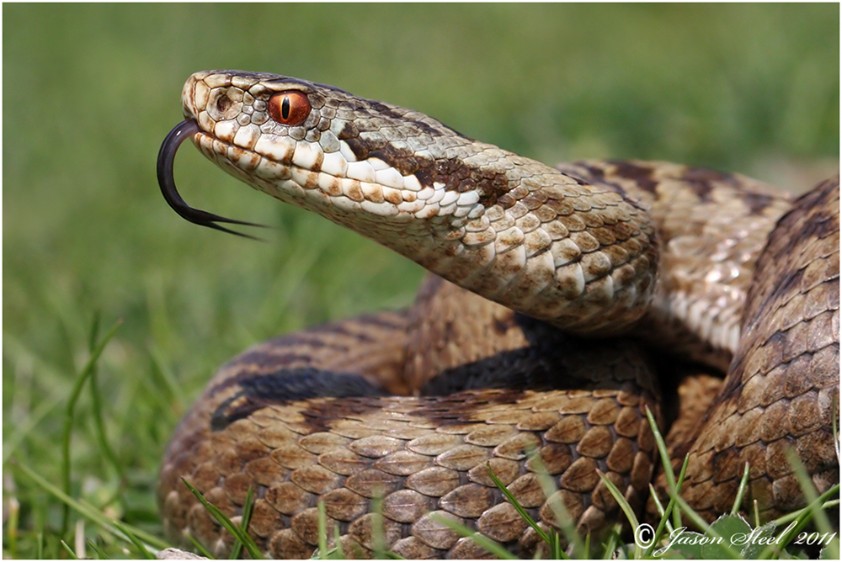
Adult female Adder.
Like most snakes the Adder's primary sense is its sense of smell. An adder will flick out its forked tongue repeatedly to gather information. As the tongue returns into the mouth of the Adder it brushes against an organ in the top of the mouth called the 'Jacobson's gland'. This organ then reads the scent particals from the air and sends all the information to the brain. This method of 'tasting the air' can help an Adder to distinguish between predators and prey and alert the snake to possible risks long before they come within the snake's eye-sight range.
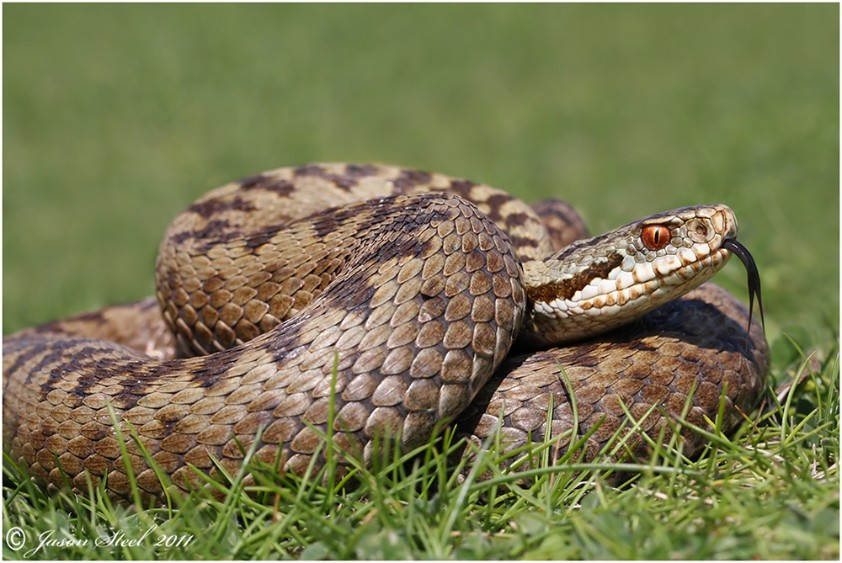
Adult female Adder.
Like all vipers the Adder has one of the most highly developed venom delivery methods in the animal kingdom. The two front-located fangs can be individually controlled as to venom delivery so the Adder only has to make contact with its victim by one of its fangs for a strike to be fatal. Behind these needle-sharp fangs are many more undeveloped fangs waiting to serve as replacements should one of the fangs get damaged or lost in a strike.
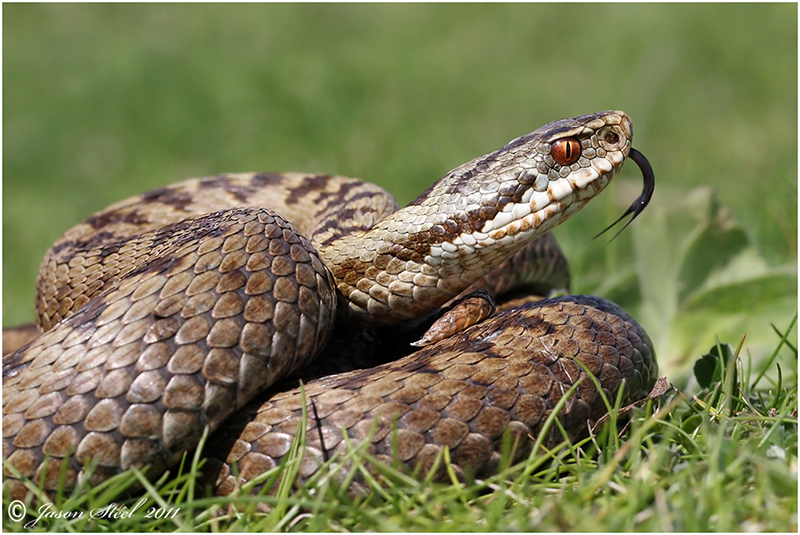
Adult female Adder.
Unlike many other venomous snakes Adders (and other vipers) do not have fixed-position fangs. Viper's fangs are particularly long for the size of the snake and when not in use these fangs are folded back against the roof of the snake's mouth out of the way. They can be folded forward in a split second should the viper need to strike.
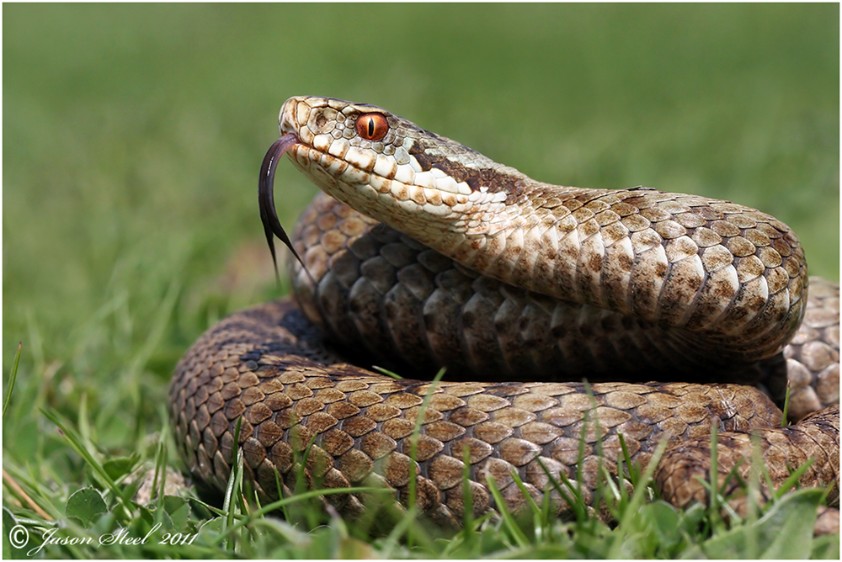
Adult female Adder.
Steve Backshall (Presenter of the BBC's Deadly 60) was unfortunately hospitalised for three days following a bite to his ankle from an Adder in the UK whilst out walking his dog. He had bruising and swelling to his leg as reported in the first series of the BBC's "Deadly 60". Walking boots are recommended if out walking in areas that are known to be home to Adders.
Steve briefly mentions this account in the 2007 book: Steve Backshall's Venom
Steve discussed his experience of being bitten by an Adder in the BBC's Deadly 60 - Series 1 - Episode 12 (United Kingdom 1).
In this episode Steve recalls: "Ever since I was a little kid, I've been obsessed with snakes. And I spend a good part of my life travelling around the world, catching some of the most venomous ones. Touch wood, I've never been bitten by handling one. Although I did get hospitalised when I stood right on top of a venomous snake and got bitten. It wasn't a black mamba. It wasn't a king cobra. And it wasn't a gaboon viper. Although it was in the viper family. In fact, it was right here in the heaths of southern England. So I've come back here to try and find one. I was in my local country park, out walking the dog. And...throwing sticks for her. And all of a sudden, felt a really sharp pain in my ankle. And it turned out to be an adder. It's had me incapacitated for the last four days, laid up in hospital for three of those. And now my leg's going purple. I was bitten here (points to ankle). Only one fang went in, I think, cos I could only see one spot of blood. And then immediately all of this area really swelled up, very, very large, very bloated. And the swelling spread all the way up my leg. It's pretty ugly. I'll have more respect for them in the future, that's for sure.
Now, I'd be absolutely heartbroken if people were scared of snakes because of what happened to me. Truth is, I must have stood right on top of that adder for it to have bitten me. Actually, it's incredibly rare for people to even see them. As soon as anyone gets close, they just disappear off into the bushes, and their camouflage is amazing. ...The adder is the only venomous snake in the British Isles. Perfectly camouflaged, with a lightning strike, it makes it a truly awesome predator, and worthy of a place on my list."
See the full text here - Buy Deadly 60 episodes here
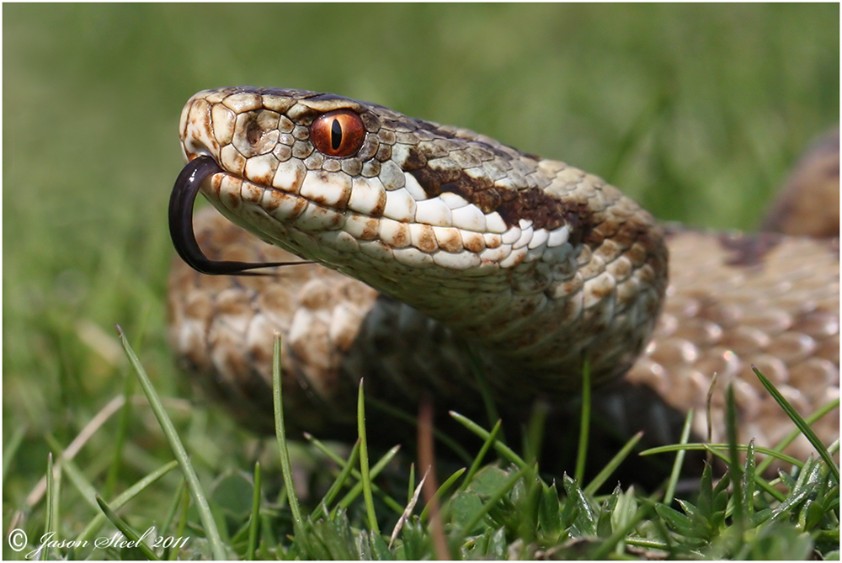
Adult female Adder.
Although commonly accepted as a diurnal species the Adder may actively hunt well into the night if the weather is warm enough. The elliptical pupils of the Adders eyes indicate that their eye-sight should be effective in low-light situations especially at fairly close range.
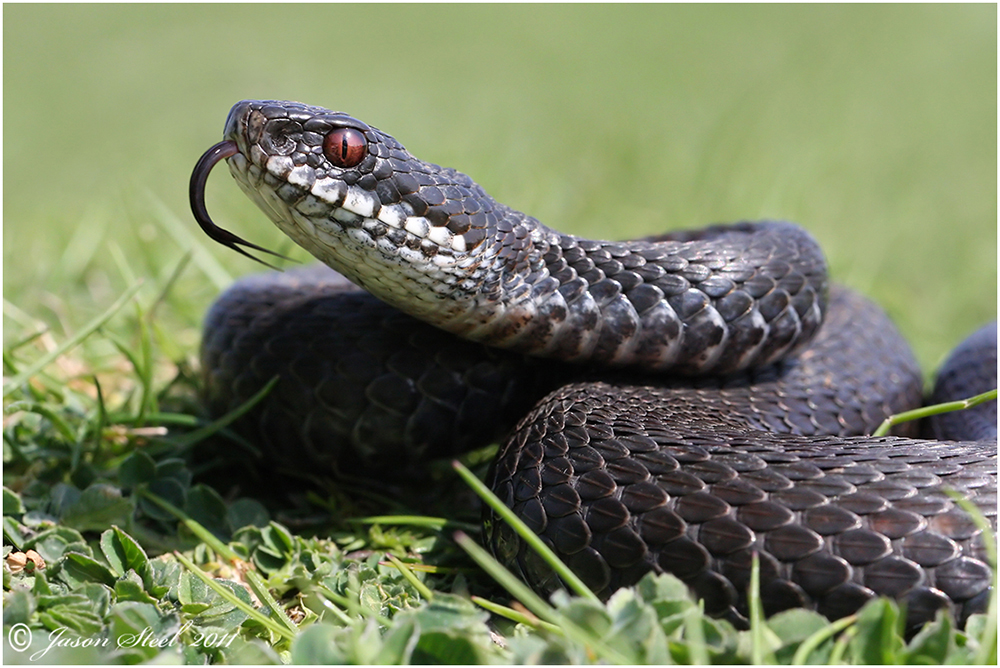
The Black Adder (Melanistic / Melanic Adder)
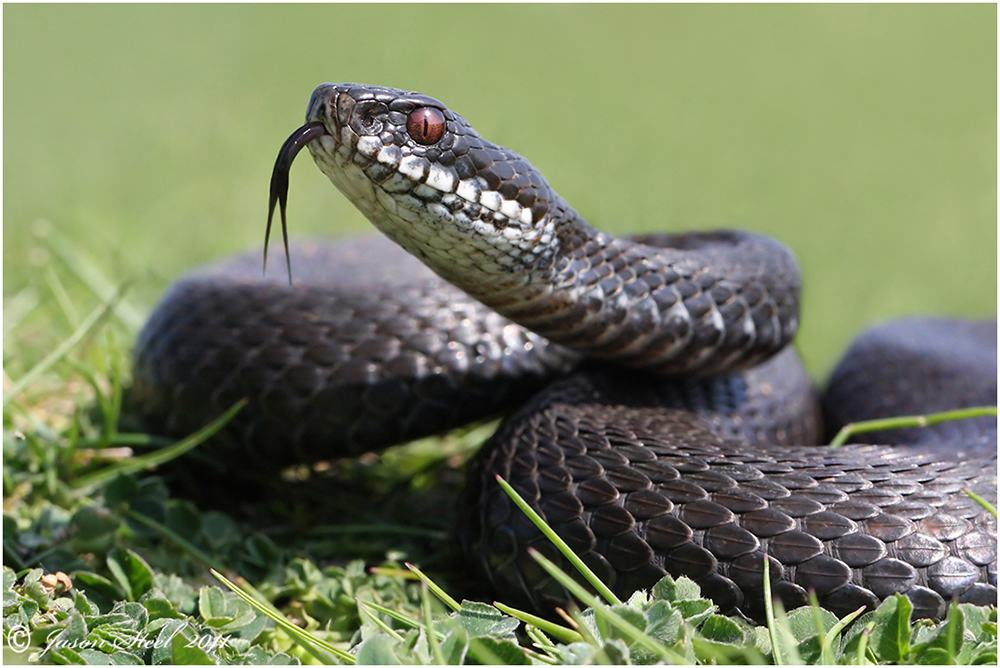
It is thought that Black Adders have an advantage in that they are more resilient to colder climates because of their ability to absorb heat more effectively and therefore warm up quicker when basking. They have a higher metabolic rate and therefore eat more frequently. This results in an increase in growth rate over the normally patterned Adder which in turn means the male Melanics more frequently win the right to mate and the female Melanics give birth to higher numbers of young Adders. Any advantage of melanism amongst Adders is offset though by the disadvantage. Melanistic Adders are more visible to predators than those of typical colouration and are therefore more vulnerable to predation.
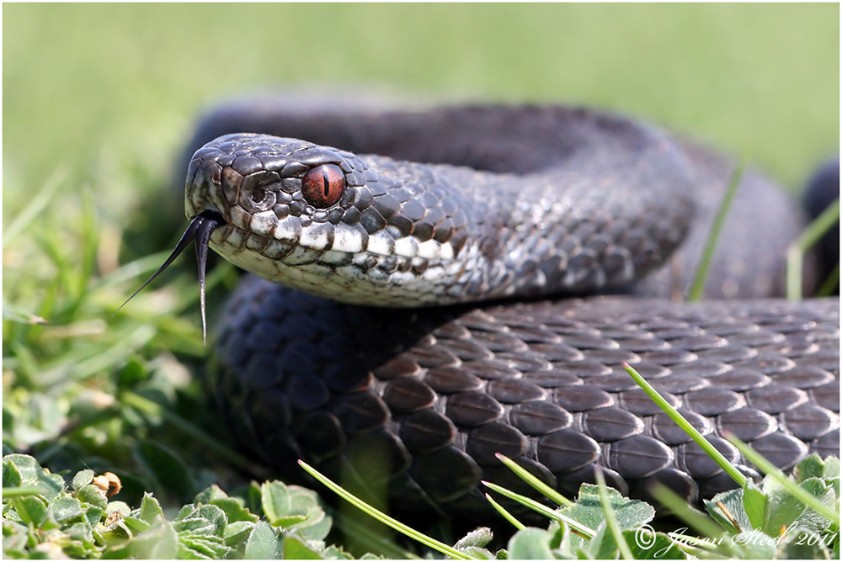
In folklore it is thought that black adders have the most potent of venom but scientific research has proved this to be nothing more than a myth and the venom is in fact no different to a normal adder.
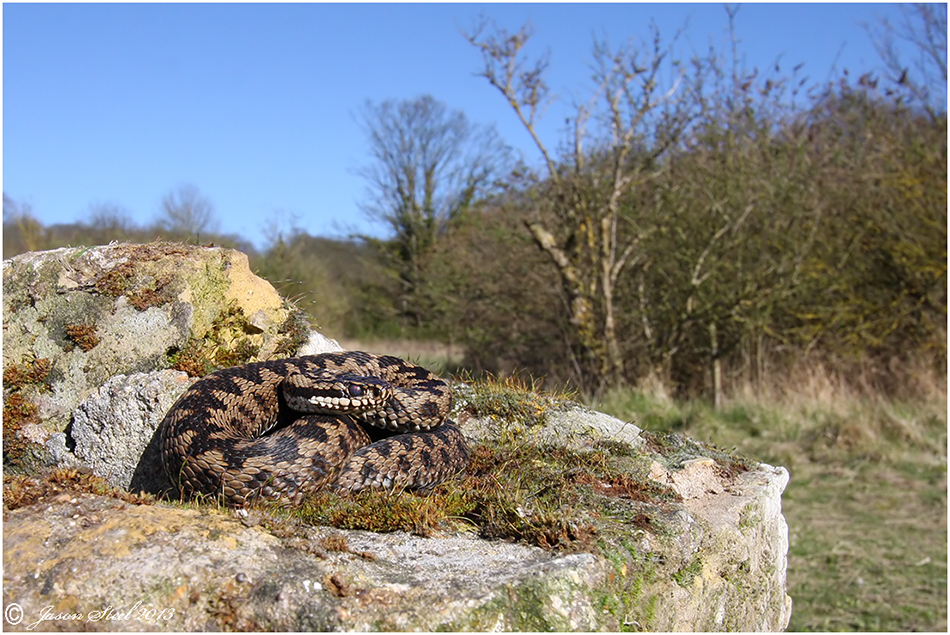
Adult male Adder.
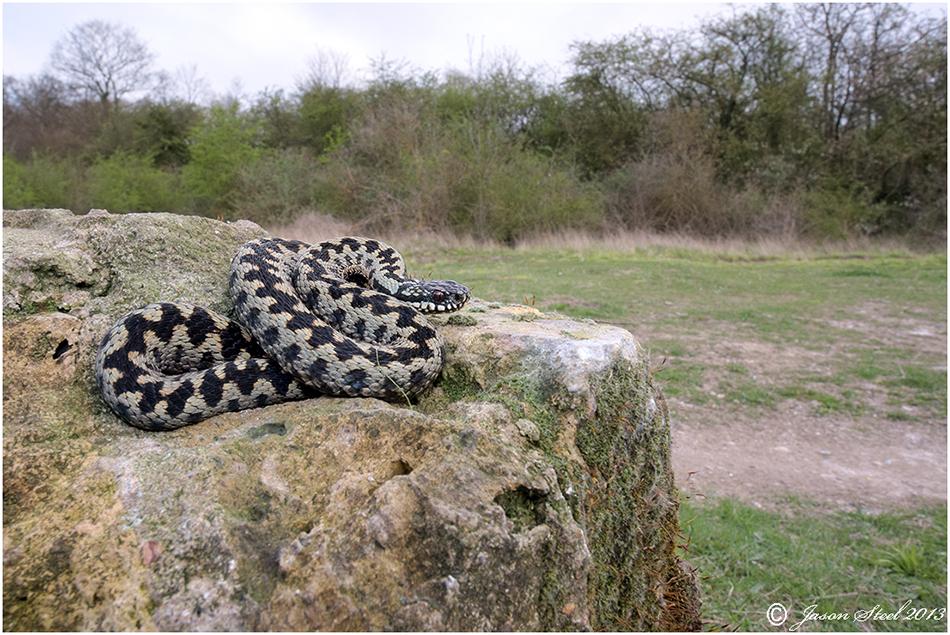
Some photos on this page were taken using the Canon 40D Camera and Canon EF 100mm f/2.8 L Macro IS USM lens and some taken with the non-IS version.
The last photos were taken with the Canon EF-S 10-22mm Wide-Angle lens.